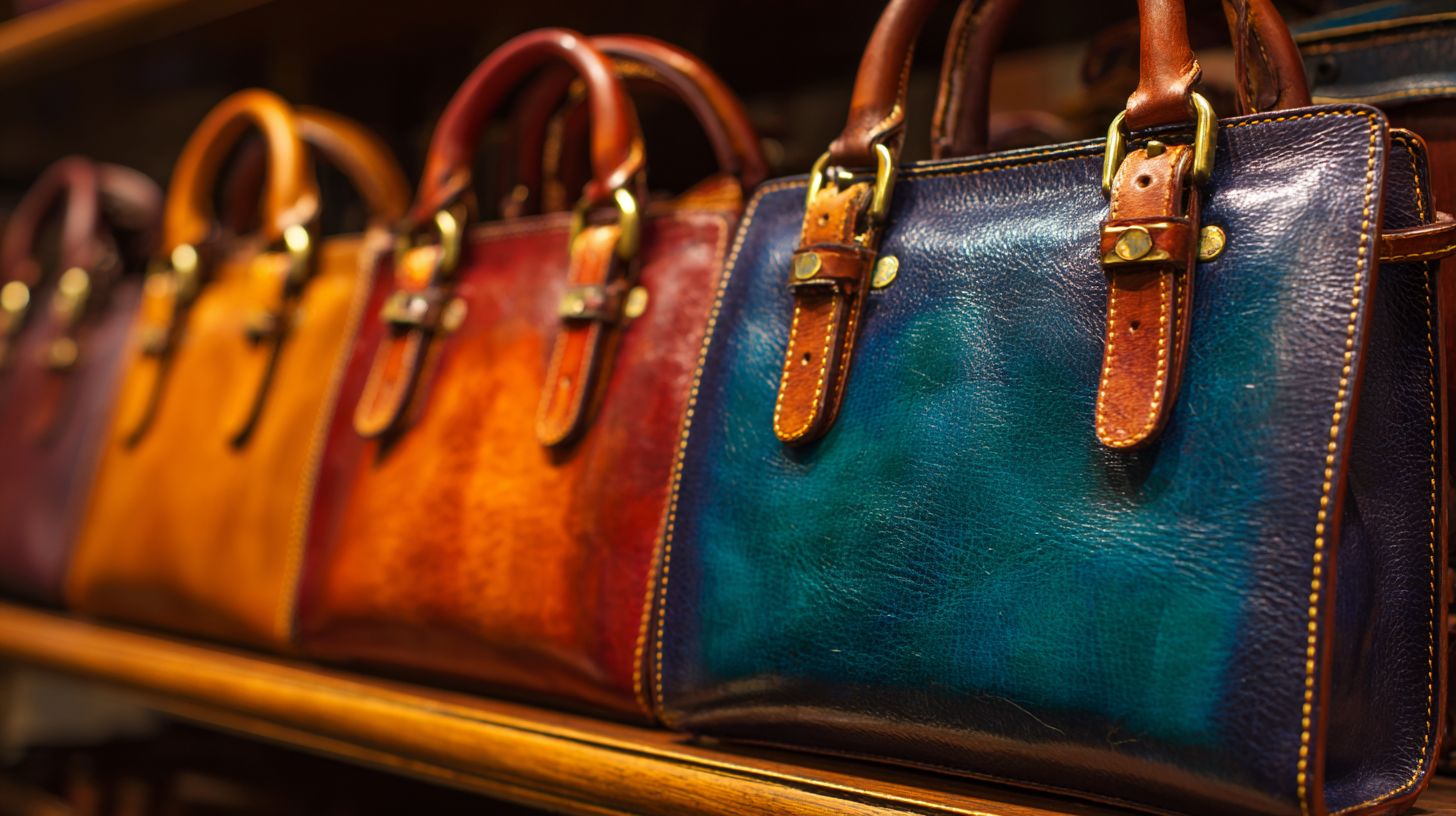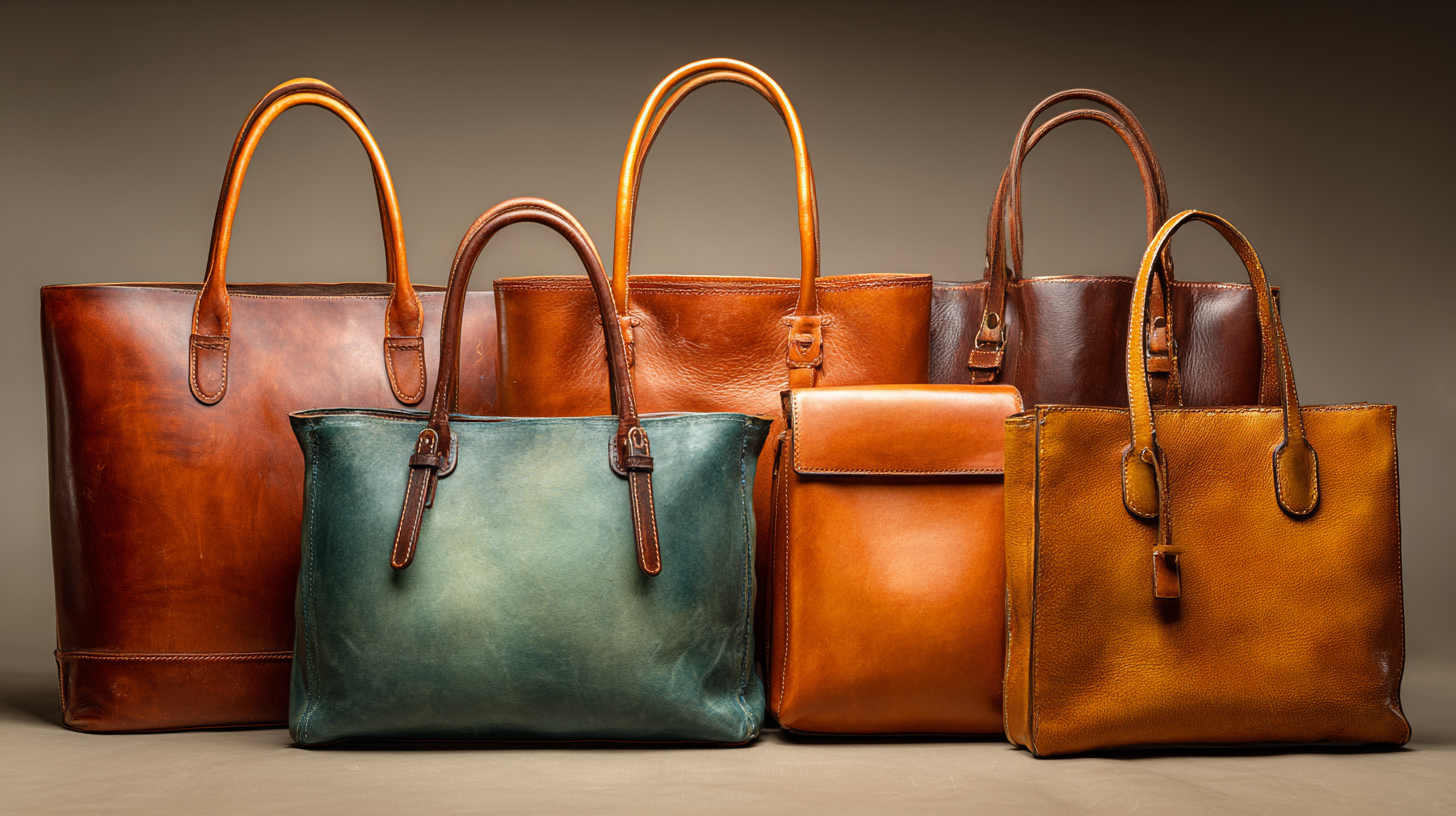Comparative Analysis of Top Quality Leather Handbags for Global Buyers
The global leather handbags market has witnessed remarkable growth, driven by rising consumer demand for high-quality and fashionable accessories. According to the latest industry report by Grand View Research, the leather handbags market size was valued at approximately $47.4 billion in 2022, and it is projected to expand at a compound annual growth rate (CAGR) of 5.0% from 2023 to 2030. This competitive landscape compels manufacturers to adhere to stringent production standards, ensuring durability and style meet consumer expectations. In this blog, we will conduct a comparative analysis of top-quality leather handbags available for global buyers, focusing on industry production standards and practical guidance on choosing the best options that cater to diverse preferences and needs. By understanding the craftsmanship and quality indicators that define premium leather handbags, consumers can make informed purchasing decisions while supporting sustainable and ethical practices in the fashion industry.

Current Trends in Luxury Leather Handbag Markets Worldwide
The luxury leather handbag market is evolving rapidly, with innovative designs and premium materials driving significant growth. As global consumers increasingly seek unique, personalized products, the demand for high-quality leather handbags is expected to surge. With a forecasted growth of USD 24.73 billion from 2024 to 2028, it is evident that brands are capitalizing on the current trend of customization, catering to the distinct preferences of discerning buyers. This shift not only reflects changing consumer behaviors but also highlights the importance of design and material innovation in crafting desirable luxury items.
Moreover, the handicraft handmade handbags segment continues to gain traction, projected to expand from approximately USD 1.8 billion in 2024 to USD 3.5 billion by 2033. This growth speaks volumes about consumers’ appreciation for artisanal craftsmanship and sustainable practices. With increasing awareness of environmental concerns, brands that emphasize ethical production and materials will likely benefit in this competitive market. Additionally, the predicted upswing in the tote bag market, set to grow by USD 9.8 billion by 2029, showcases the versatility and practicality of leather products that cater to both fashion and functionality in everyday life.
Comparative Analysis of Top Quality Leather Handbags for Global Buyers - Current Trends in Luxury Leather Handbag Markets Worldwide
| Region | Popular Materials | Average Price Range (USD) | Fashion Trends | Sustainability Focus |
|---|---|---|---|---|
| North America | Full Grain Leather, Saffiano | $500 - $2000 | Minimalism, Vintage Styles | High |
| Europe | Nappa Leather, Suede | €400 - €2500 | Bright Colors, Crossbody Styles | Medium |
| Asia | Exotic Leathers, Synthetic Options | ¥3000 - ¥15000 | Embellishments, Large Totes | Low |
| Australia | Vegetable-Tanned Leather | AUD 600 - AUD 2800 | Eco-friendly Designs, Modular Bags | High |
Key Features to Consider When Choosing a High-Quality Leather Handbag
When choosing a high-quality leather handbag, there are several key features to consider that can significantly impact both style and functionality. First and foremost, the type of leather used in the handbag is crucial; full-grain and top-grain leathers are often regarded as the best options due to their durability and ability to age beautifully. This characteristic not only ensures longevity but also adds a unique patina over time, making each handbag a one-of-a-kind piece.
Another essential factor is the craftsmanship. Pay attention to the stitching and finishing details, as these often indicate the level of quality involved in the production process. Hand-stitched seams tend to be more durable than machine-stitched ones, reflecting the artisan's commitment to the craft. Additionally, consider the functionality of the handbag itself—features like organizational pockets, adjustable straps, and secure closures can enhance usability without compromising style. Selecting a handbag that balances these elements will ensure that it remains a cherished accessory for years to come.
Comparative Analysis of Leather Handbag Features
Comparison of Leading Leather Handbag Brands by Quality and Price
When considering the world of leather handbags, it's essential to evaluate both quality and price, especially with the emergence of new brands and timeless classics alike. In 2025, a diverse range of purse options is available, catering to different styles and budgets. From sustainable newcomers to established luxury names, the market is vibrant and offers something for every discerning buyer. Popular options often blend exceptional craftsmanship with innovative materials, ensuring that consumers invest in pieces that stand the test of time while providing a stylish statement.

As you navigate this expansive landscape, remember that quality often correlates with price. While some affordable options exist, investing in a durable handbag from a reputable brand typically guarantees longevity and reliability. The trend towards high-quality handbags, even from niche or resale markets, shows that buyers are increasingly prioritizing investment pieces over fast fashion. This shift underscores the importance of considering both quality and price in your buying decision, as a well-made handbag can become a staple in your wardrobe for years to come.
Sustainability Practices in Leather Production and Consumer Impact
When it comes to purchasing luxury leather handbags, consumers are increasingly concerned about the sustainability practices behind leather production. The leather industry has come under scrutiny for its environmental impact, from water usage to deforestation. Many top-quality brands are now incorporating eco-friendly practices into their production processes, such as using vegetable-tanned leather, which is less harmful to the environment than traditional tanning methods. These sustainable approaches not only reduce the ecological footprint but also appeal to conscious consumers who value ethical fashion.
Tips for Choosing Sustainable Leather Handbags:
- Research Brands: Look for brands that prioritize sustainability in their production processes. Many companies now transparently share their sourcing and manufacturing practices.
- Check for Certifications: Seek out handbags that come with sustainability certifications, which indicate adherence to environmental and ethical standards.
- Consider Longevity: Invest in timeless designs that ensure longevity, both in style and durability. High-quality leather can last for years, reducing the need for frequent replacements.
By being mindful of sustainability practices, consumers can make informed decisions that align with their values while enjoying the luxury and craftsmanship of leather handbags.
Future Projections for Leather Handbag Demand and Market Dynamics
The future projections for leather handbag demand suggest a robust growth trajectory, largely driven by evolving consumer preferences and an increasing emphasis on sustainability. As buyers become more discerning, there is a notable shift towards high-quality, ethically sourced leather goods. This trend is particularly prevalent among millennials and Gen Z consumers, who are willing to invest in luxury items that not only offer durability but also align with their values regarding environmental impact. Brands that prioritize transparency in their supply chains and sustainable practices are likely to gain a competitive edge in this expanding market.
Market dynamics are also shifting as online shopping becomes the preferred method for purchasing luxury handbags. The convenience of e-commerce, coupled with the rise of social media marketing, has enabled brands to reach a global audience more effectively. In addition, the ongoing digital transformation in retail has prompted traditional luxury brands to enhance their online presence and adopt innovative technologies, such as augmented reality for virtual try-ons. As these market changes unfold, brands that remain agile and responsive to consumer trends will solidify their positions in the competitive landscape of leather handbags.


